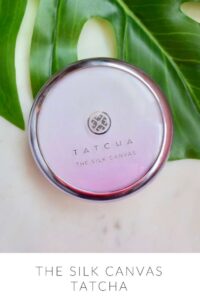Is Gingham Good for White Fabric Designs?
Fabric compatibility is crucial in fashion and sewing, influencing the final product’s aesthetic, comfort, and durability. When considering whether to mix gingham with white fabric designs, understanding their compatibility can guide your creative projects. This article explores the synergy between these fabrics, offering insights into their properties, benefits, challenges, and practical sewing tips.
Compatibility Analysis
Yes, gingham is generally a good choice for white fabric designs. The reason lies in their complementary properties. Gingham, typically made from cotton or a cotton blend, pairs well with white fabrics due to similar textures and weights. Both are breathable and often share similar care requirements, making them easy to maintain together. Key factors include:
- Texture and Weight: Gingham’s smooth texture and lightweight nature blend seamlessly with most white fabrics, ensuring a cohesive look.
- Stretch and Care Requirements: Both fabrics usually have minimal stretch and require similar care, such as cool washing and gentle ironing.
- Durability: Cotton-based gingham and white fabrics are known for their durability, making them suitable for long-lasting designs.
Fabric Properties Comparison Table
| Property | Gingham | White Fabric (Cotton) |
|---|---|---|
| Fiber Content | Natural (Cotton) | Natural (Cotton) |
| Weight and Thickness | Light to medium | Light to medium |
| Breathability | High | High |
| Stretch and Elasticity | Minimal | Minimal |
| Wrinkle Resistance | Moderate | Moderate |
| Care Instructions | Cool wash, gentle iron | Cool wash, gentle iron |
| Durability | High | High |
Benefits of Mixing These Fabrics
Combining gingham with white fabrics offers several advantages:
- Enhanced Texture and Visual Interest: The checkered pattern of gingham adds a dynamic element to plain white designs, creating visual intrigue.
- Improved Comfort and Performance: Both fabrics are breathable and comfortable, suitable for warm weather garments.
- Better Drape and Movement: The lightweight nature of both fabrics allows for excellent drape, enhancing garment flow.
- Cost-Effectiveness: Cotton-based materials are generally affordable, making this pairing budget-friendly.
- Seasonal Versatility: Suitable for both summer and transitional seasons due to their breathable nature.
- Design Possibilities: The contrast between gingham’s pattern and white fabric’s simplicity offers endless creative possibilities.
Potential Challenges
While mixing gingham and white fabrics has many benefits, there are potential challenges:
- Different Shrinkage Rates: Pre-wash both fabrics to minimize shrinkage discrepancies.
- Conflicting Care Requirements: Ensure both fabrics can be washed and ironed at similar settings.
- Texture Clash or Pilling: Choose high-quality fabrics to reduce pilling risks.
- Seam Puckering: Use appropriate sewing techniques to prevent puckering.
- Color Bleeding or Fading: Test for colorfastness before combining.
Practical Solutions
- Pre-Wash Fabrics: Pre-wash to manage shrinkage and colorfastness.
- Use Quality Threads: High-quality threads can prevent seam issues.
- Select Appropriate Patterns: Choose patterns that accommodate both fabrics’ properties.
Sewing & Styling Tips
For a successful gingham and white fabric combination, consider these tips:
- Sewing Techniques: Use a straight stitch with a medium-length setting for stability.
- Needle and Thread Recommendations: A universal needle (size 80/12) and cotton thread work well.
- Interfacing and Stabilizer Needs: Lightweight interfacing can add structure without bulk.
- Seam Finishing Methods: French seams or serged edges provide a clean finish.
- Pattern Selection Advice: Opt for designs that highlight gingham’s pattern, such as dresses or shirts.
- Styling Ideas: Pair gingham accents with white base garments for a chic look, or use in home decor like tablecloths and cushion covers.
Care & Maintenance Guide
To maintain the quality of your gingham and white fabric creations:
- Washing Instructions: Use a gentle cycle with cold water to prevent damage.
- Drying Recommendations: Air dry or tumble dry on low heat to maintain fabric integrity.
- Ironing and Steaming Tips: Iron on a low setting, using steam sparingly to avoid fabric damage.
- Stain Removal: Treat stains promptly with a mild detergent.
- Long-Term Care: Store away from direct sunlight to prevent fading.
FAQ Section
-
Can you wash gingham and white fabric together?
Yes, if both are made from similar fibers like cotton, they can be washed together on a gentle cycle. -
Will gingham shrink more than white fabric?
Pre-washing both fabrics can help manage any potential shrinkage differences. -
What needle size should I use for sewing these fabrics together?
A universal needle size 80/12 is recommended. -
Can you mix gingham and white fabric in one garment?
Absolutely, they can create a harmonious and stylish look. -
How do you prevent seam puckering when combining these fabrics?
Use the right needle, thread, and tension settings to avoid puckering. -
Is it okay to mix gingham and white fabric for upholstery?
Yes, but ensure both fabrics are durable enough for upholstery use. -
What’s the best way to finish seams with these fabrics?
French seams or serged edges provide a professional finish.
By understanding the compatibility of gingham and white fabrics, you can create stylish and durable garments and home decor items. With attention to detail in sewing and care, this fabric pairing can enhance your projects with its classic charm and versatility.

Leave a Reply